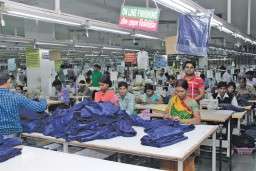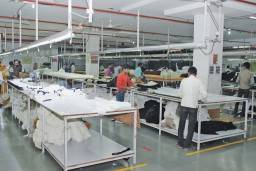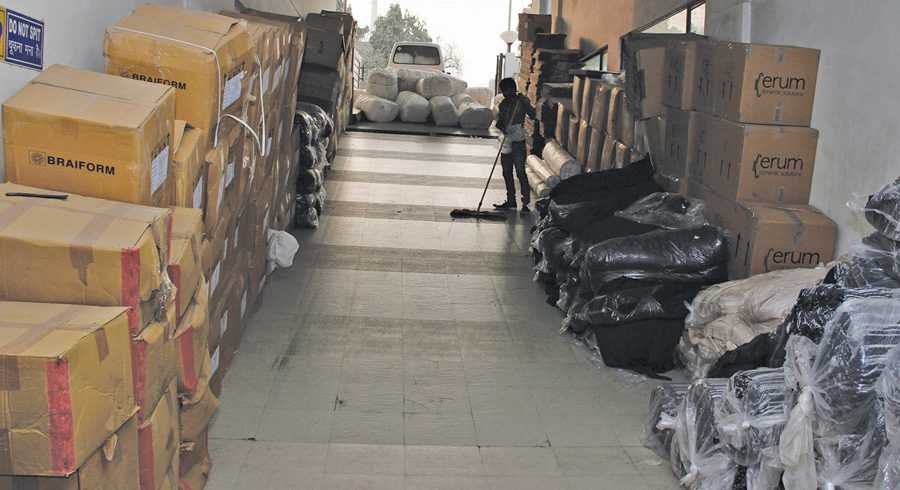

On its way to building a competitive enterprise, Dimple Creations has streamlined its operations for improved productivity with an 18-month Lean implementation program with assistance from Ministry of Micro, Small & Medium Enterprises (MSME), Ministry of Textiles, India and Okhla Garment and Textile Cluster (OGTC). In an exclusive chat with StitchWorld, Sharad Duggal, CEO, Dimple Creations shares the key milestones and intricacies of the journey of last 18 months, the reformed procedures, and the plan for the times ahead…
The group with four factories across NCR manufactures 2 million garments for C&A and 2.5 million garments for Mango per annum apart from catering to the likes of Disney, Inditex, ONLY and Vero Moda. The Lean program was first initiated at the Hosiery Complex factory and commenced with a diagnostic audit wherein the entire factory was assessed for areas having scope for improvement. “I focused on efficiencies of all feasible kinds – movement of goods, changeover times, garment handling, etc. Essentially, anything that I could see would add value to my factory,” avers Sharad. Execution of the Lean program, training of the workforce and periodical audits followed.
The Lean Landscape

Amongst the most striking changes on the shopfloor following conclusion of the Lean program is the online finishing layout which has made it possible for Dimple Creations to work on tight finishing schedules. “Whatever is coming off the machine, we are ensuring that within 3 hours it is in the polybag,” details Sharad. If there is a laundry process in-between, then the lead time to packing is extended to a maximum of six hours.
The success of the program requires following the stringent schedules put in place. The first part of this phase was WIP reduction for quick detection of quality and production planning failures. Now the factory uses baskets for material movement between workstations wherein each basket carries only one garment. “In case there is a build-up of WIP, the baskets start accumulating and it is an obvious indicator of trouble that needs to be nipped,” informs Sharad. Although, the process empowered the workforce to take a decision in case of troubleshooting, not very frequently, but there arose issues which cannot be solved immediately. This is where the entire process or the conveyor belt stops. It is only at these times that Sharad gets involved. “Either you move it or remove it,” believes Sharad who proscribes unnecessary waits whether it is at the line level, factory level or the liaison office level. “Essentially, at the end of the day all I need to do is simply click a photograph from my phone, send it to the buyers over WhatsApp and tell them that this is what I will do to rectify it,” avers Sharad. It has been possible for Dimple Creations to work in such close proximity with its buyers because of a decision the company took few years ago to work directly with buyers or their liaison offices.
While Dimple Creations has adopted online finishing, the cutting remains centralized for the entire factory due to space constraint and the fact that cutting creates a lot of lint and waste on the floor. Moreover, most of the times the cutting is followed by embroidery so the company thought it to be more appropriate to not place it on the sewing floor.
The Teething Troubles
The journey makes for an interesting case of ‘change management’ as it was made up of shifts of multiples entities, layouts, and decision centres in the production line. Inevitably, resistance followed. “The resistance was to such an extent that at the end there was collateral damage and we had to lose a couple of employees before the middle management started taking this initiative seriously,” reveals Sharad.
Some issues still continue, such as poor ventilation on the refurbished floors which leads to increased humidity on the sewing-cum-finishing floor in summers. Sharad will now be working on improving the humidity control on the ground floor.
All these interventions increase the cost of finishing. “In the conventional finishing, you had pieces coming off the sewing machines and being sent to finishing. So there is always some work in progress to engage idle labour. Now you may have a higher capacity of pressing and finishing but during the lean seasons, the finishing operators sit idle,” explains Sharad. Moreover, there are a few capital costs attached to the new setup. “Processes and equipment like spot cleaning and button attach that were earlier consolidated, are now required in every line,” informs Sharad.
The Paradigm Shift
The paradigm shift that has taken effect is that the onus of quality is not only on the quality department, but more on the production. In order to ensure that the transformation is sustained, an incentive mechanism has been instituted.
Benefits – Unlocking the potential
Shortening of lead times has had trickle down benefits for the whole of operations as the deliveries can now be mapped with better transparency. The reduced WIP has snipped the style changeover time to a few hours (depending on the style). Moreover, as the rejections are taken care of immediately and any other production-related problems arising are tackled on the line, the quality issues have been curtailed. “The minute the cutting is completed, the packing list is already finalized,” adds Sharad.
Initially, the project was implemented only on two lines and on its success, it was implemented on the remaining 20 lines in the factory. Once the finishing lines were merged with the sewing line, Sharad was left with vacant space which he has used to set up an independent finishing floor for the increased sewing capacity. “Moreover, this is a time where typically you will see companies airing shipments and asking for extensions, but we have already written to our buyers saying that we have spare capacities towards the end of February. We have created capacities and now we are confident on taking on more business,” shares Sharad about the opportunities and capacities unlocked.
Sustaining by Training
Continuous training of its workforce is critical for any factory to improve and sustain the improvements. “In the leaner months we send our operators back to the training school. We even upgrade long time helpers to operators,” explains Sharad. However, the true success of training lies in on how successful the company has been in retaining the upgraded workforce post the training. “We are paying them 20 per cent above the industry minimum and we continue investing in them,” details Sharad on his primary mechanism of employee engagement. The Management at Dimple Creations regularly interacts with the workforce for communicating their achievements and upcoming initiatives over complimentary tea and snacks. “When they see that we are investing in them, most of them stay,” shares Sharad.
The Future
Sharad recognises that the manufacturing has certainly become more competitive. However, before the company begins taking the next step in process improvement, Sharad will absorb and assess the returns of the recently taken initiatives.

Post a Comment